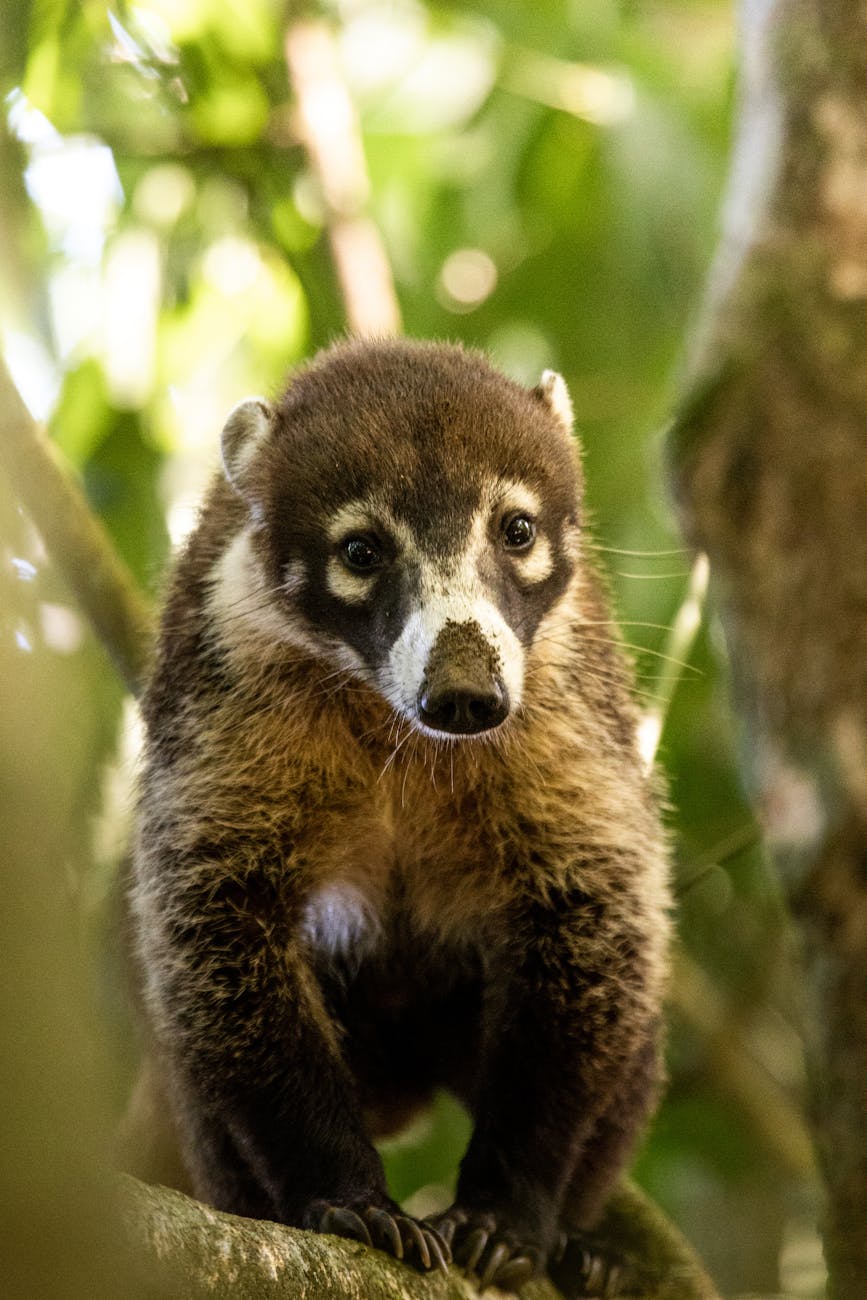
Curious about those raccoon-like animals with long noses and ringed tails? You might be thinking of the coati—also known as the coatimundi! Here’s a handy FAQ to help you get to know these quirky creatures of the Americas.
What is a coati?
A coati is a medium-sized mammal native to Central and South America, and parts of the southwestern U.S. It’s a member of the raccoon family (Procyonidae) and is known for its long, flexible snout, ringed tail, and social behavior.
Is a coati the same as a coatimundi?
Yes—“coatimundi” is simply another name for a coati, especially referring to the solitary adult males. The term comes from the Tupí-Guaraní language and means “lone coati.”
What do coatis look like?
Coatis have:
- Long, pointed snouts that can move around like a pig’s nose
- Dark-ringed, bushy tails they often hold upright
- Sharp claws for digging and climbing
- Brown, reddish, or grayish fur, depending on the species
They’re about 2–3 feet long (tail included) and weigh between 6–15 pounds.
What do they eat?
Coatis are omnivores. Their diet includes:
- Insects and larvae
- Fruits and berries
- Eggs and small animals
- Occasionally carrion
They forage on the ground but are great climbers, too.
Are coatis social animals?
Very! Female coatis and young males live in groups (called bands) that can have up to 30 individuals. Adult males live alone most of the time—hence the name coatimundi.
Where do coatis live?
Coatis are found throughout:
- Southern Arizona, New Mexico, and Texas
- Mexico
- Central America
- Much of South America, especially in forested or mountainous areas
They prefer woodlands, tropical forests, and scrublands but can adapt to various environments.
Are coatis dangerous?
Not usually. Coatis aren’t aggressive toward humans but can bite or scratch if threatened or cornered. In places where they’ve become accustomed to people (like tourist spots), it’s best not to feed them or try to pet them.
Can coatis be kept as pets?
In some places, yes—but it’s not recommended. Coatis are wild animals with strong digging instincts, sharp claws, and complex social needs. They can become aggressive or destructive in captivity without proper care.
What’s the conservation status of coatis?
Most coati species are not endangered and have stable populations. However, habitat loss and hunting have affected some local populations, especially where forests are disappearing.
Final Thoughts:
Coatis—whether you call them by their group name or as the lone coatimundi—are fascinating, intelligent animals. They’re a reminder of the diversity of wildlife found across the Americas, and why protecting natural habitats is so important.
Want to learn more about raccoon relatives? Check out our round-up of the raccoon family.
More photos below ↓


















Disclaimer: This blog post is for edutainment purposes only and may not be entirely accurate.






